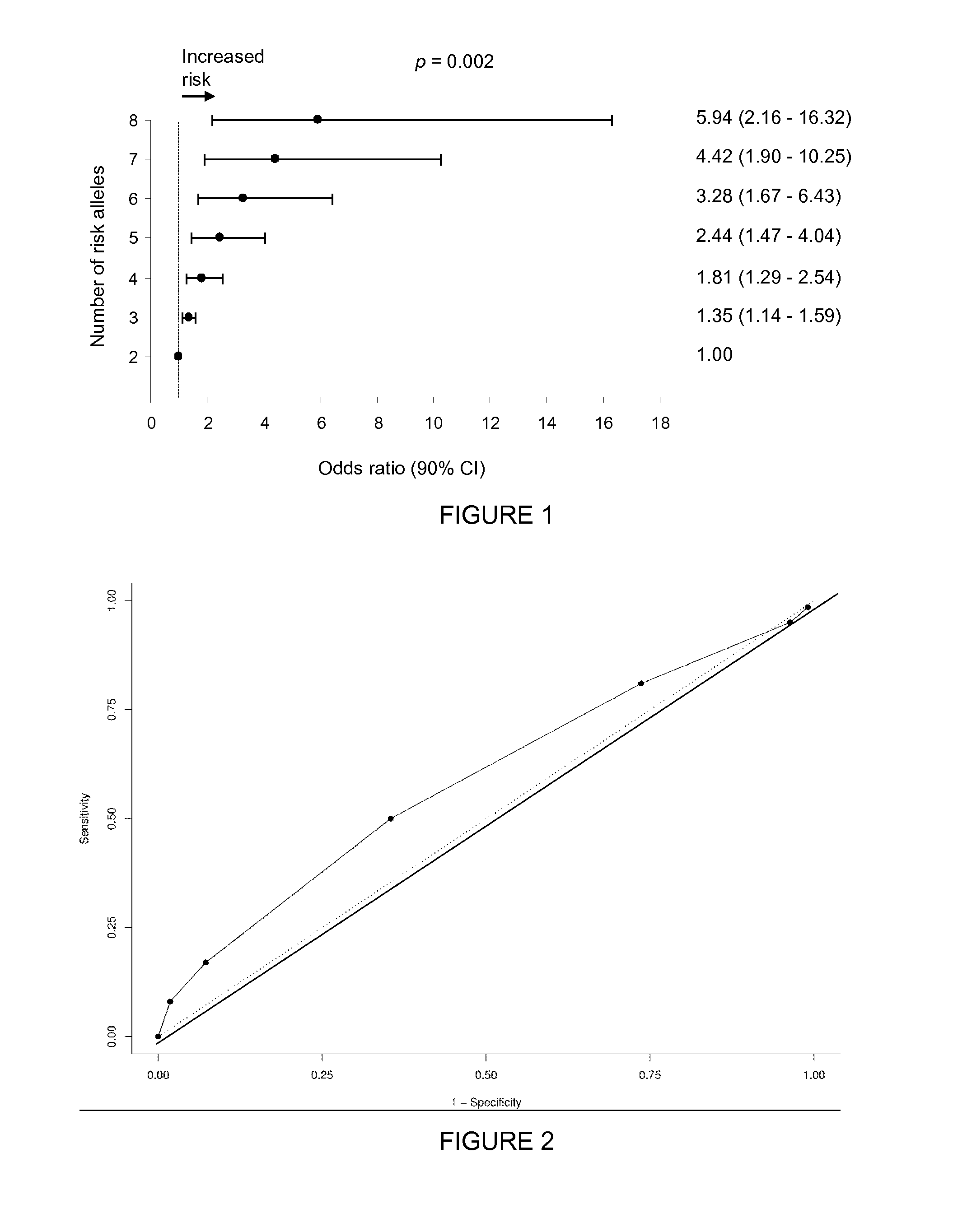Combination of risk alleles associated with autism
a risk allele and autism technology, applied in the field of autism risk alleles, can solve the problems of increasing the risk associated with increasing the number of risk alleles, the predictive power of each gene individually is too small to be clinically useful in complex diseases, and the contribution to disease risk of each individual gene identified is generally low, so as to maximize the predictive value of a genetic test, the odds ratio per risk allele, and the effect of low risk
- Summary
- Abstract
- Description
- Claims
- Application Information
AI Technical Summary
Benefits of technology
Problems solved by technology
Method used
Image
Examples
example 1
Autism Risk Prediction in Children
Materials and Methods
Study Design
[0054]The primary objective of this single center study with prospective genotyping was to evaluate the risk associated with 4 low-penetrance single nucleotide polymorphisms (SNPs) (rs6872664 [PITX1], rs35678 [ATP2B2], rs2292813 [SLC25A12], and rs1861972 [EN2]) in a multigene model in siblings of children diagnosed with autism, pervasive developmental disorder, or autism spectrum disorders (affected, broad phenotype). The alleles were as follows: rs6872664 (major allele [risk allele]=C; minor allele=T); rs35678 (major allele=C; minor allele [risk allele]=T; recessive coding for risk allele in risk score), rs2292813 (major allele [risk allele]=C; minor allele=T), and rs1861972 (major allele [risk allele]=A; minor allele=G).
[0055]Nuclear families with at least two offspring, at least one of which was affected by an autism spectrum disorder, were recruited from a variety of sources, including newspaper articles, parent ...
example 2
[0079]The Tables below summarize the association between additional SNPs in the ATP2B2, EN2, PITX1 and SLC25A12 genes that may be used for diagnosing a risk for autism. P-values are given for two statistical models either additive or recessive. The frequency is provided for the risk allele, fam# denominates the number of informative families for each analysis.
PUM
| Property | Measurement | Unit |
|---|---|---|
| autism-spectrum disorder | aaaaa | aaaaa |
| content area | aaaaa | aaaaa |
| predictive power | aaaaa | aaaaa |
Abstract
Description
Claims
Application Information
 Login to View More
Login to View More - R&D
- Intellectual Property
- Life Sciences
- Materials
- Tech Scout
- Unparalleled Data Quality
- Higher Quality Content
- 60% Fewer Hallucinations
Browse by: Latest US Patents, China's latest patents, Technical Efficacy Thesaurus, Application Domain, Technology Topic, Popular Technical Reports.
© 2025 PatSnap. All rights reserved.Legal|Privacy policy|Modern Slavery Act Transparency Statement|Sitemap|About US| Contact US: help@patsnap.com

